Before the 1850s, this area was mostly taken up by quarries so the land was of little value. However, speculator Alexandre Chauvelot saw an opportunity and purchased 18 hectares. He sold it in small parcels of land to working-class Parisians, many working on Haussmann's elegant transformation of central Paris. Building with the finest stone from local quarries by day, they constructed their own small homes from the cheapest. Chauvelot (and the fellow speculators who soon joined him) didn't waste potential building land on wide roads, so the original streets are joined by narrow passages. Although the early houses have gone, the street layout survives.
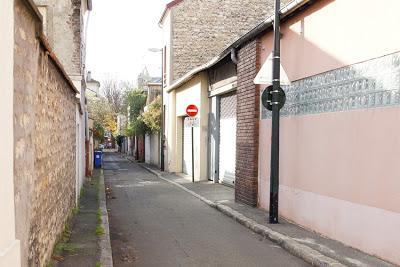
Why call the town Malakoff? Because as well as housing, Chauvelot invested in a Crimean War theme park which opened in 1856, offering a restaurant, dancing and bars. Malakoff was a decisive battle, fought over the tower of the same name in Sebastopol, and the park centrepiece was a replica Malakoff Tower. It was 50 metres high, decorated with portraits of combatants, and housed an exhibition on the war - which had ended only the previous year. (Given that spectators had taken picnics to watch the Battle of Alma, it is perhaps not surprising that Chauvelot seems to have been untroubled by concerns about good taste.) Initially the park attracted up to 12,000 visitors on Sundays, but when Chauvelot died in 1861 it went into decline. By 1871, the tower was a liability because of its potential use by the Prussians besieging Paris. It was demolished, leaving the street name 'rue de la Tour' and the name of the town as reminders.
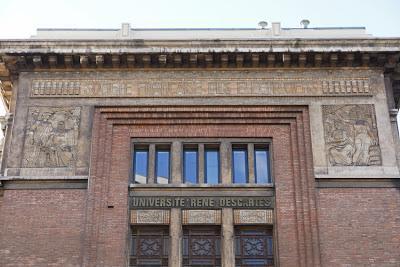
The law faculty of Paris Descartes University now occupies the former École Supérieure d'Électricité. The building, opened in 1926, proudly bears the name of its former occupant - a prestigious postgraduate school of engineering. It has a place in technological history: the first French television demonstration was given here in 1931 by René Barthélemy. The 30-line image transmitted from nearby Montrouge showed his collaborator Suzanne Bridoux, who thus became the first French television presenter! The following year, the PTT (French post office, also responsible for telegrams and telephones) began broadcasting and by 1935, Barthélemy's channel was making daily broadcasts using a much improved 180 lines. There were only a hundred French television sets available to receive them; by the time of Barthélemy's death in 1954, there were around half a million.
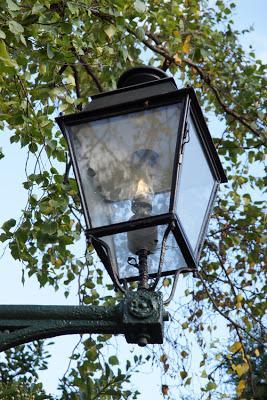
Tucked away on a footpath is the (locally) famous Leon the lamp which has its own preservation society. It's the only lamp in Ile de France to have remained continuously gas-powered since its installation in 1925. The arrival of street lighting was part of a larger project to improve amenities in the town - roads were also paved, sanitation installed and municipal buildings constructed. This surge of activity was followed by the construction of a health center in the 1940s.
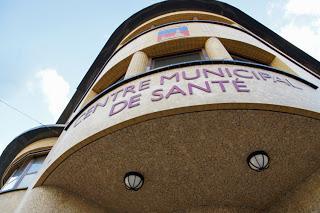
My interest in ghost signs has led to a related interest in French liqueurs, which account for a high proportion of the faded advertisements on France's walls. I haven't yet seen one for Clacquesin, but it was nice to find out about this 'medicinal' drink which used to be distilled in the town. It doesn't contain the near-ubiquitous quinquinoa, but is based on pine resin - as the logo illustrates - combined with 32 plant extracts including cinnamon, cloves, lemon, orange and juniper berries, all sweetened and coloured by caramel.
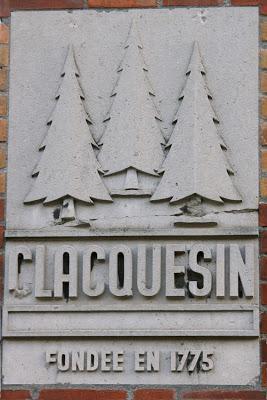
The distillery was established in 1860 and moved to its current premises in 1903. Pauline Clacquesin, the wife of its founder Paul, was highly skilled at publicity - using everything from radio and wall adverts to promotional city maps and calendars, to endorsements from Tour de France cyclists. The aperitif was hugely fashionable in the 1920s, a favorite of stars including Josephine Baker. Forbidden during the Occupation, it suffered a further blow with the death of Pauline Clacquesin in 1942, and didn't recover in the post-war years. It is now being made again at a new site by the great-grandson of its founders; the original stills and equipment remain here, and the premises are used as an events venue. After all, this fascinating place is just a short metro ride from the center of Paris.
Further reading: official website (in French)

